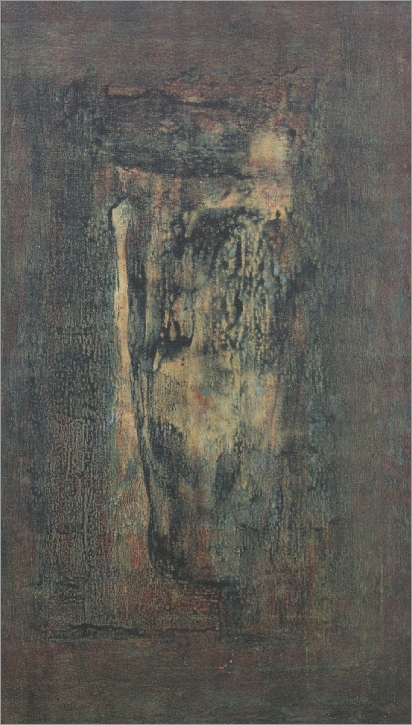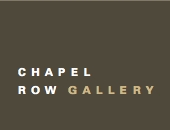---------- 24 - 30 APRIL 2008 The Art of Self Expression |
|||||||
---------- ---------- ---------- |
---------- Email josie.reed@chapelrowgallery.com ---------- © COPYRIGHT 2007 - 2011 l CHAPEL ROW GALLERY ---------- |
||||||
 |
|||||||
'Embers' Roger Holtom, a London-based artist, uses an unorthodox mixture of oils, acrylics and varnishes to create an exciting and very personal portfolio of effects. His work, which is both visually and physically arresting, is becoming increasingly popular with corporate as well as private collectors following critical acclaim at the major London Art Fairs. |
||
 |
||
'Ghostmask' Roger Holtom 'Growing up in a mining community in South Yorkshire I was equally enchanted by the bleak vista of slag heaps and shunting yards, the explosive drama of the local steel works and the rugged beauty of the nearby Peak district. Such distinct and contrasting environments awakened in me a lifelong fascination with the visual grandeur of these different landscapes and the range of textural detail specific to each one. When I first tentatively took up the life of an artist fifteen years ago, it soon became apparent that for me this would be an attempt to reproduce the visual and tactile sensations that interested me and to present them framed within the confines of the canvas. Frustrated by the qualities of canvas per se, I now work straight onto board, the solid surface allowing me to develop a variety of techniques whereby I can ‘work’ the surface, building up complex textural patterns then distressing them with sandpaper, for example. In effect I am mimicking the forces of nature - in this case erosion or corrosion. I have always been interested in the parallels between the different artistic disciplines and a personal exploration into the visual arts has proved to be a refreshing complement to a formal musical education. Musical performance and artistic creation both require close attention to textural detail and the way in which it relates to the underlying form of the composition. With music this is all carefully prepared in advance and presented as a transient experience. The gradual evolution of an artwork, however, allows one to stand back and enjoy not only the process but also a final result which can be revisited and appreciated long into the future. Having originally trained as a cellist has almost certainly affected my painting technique. It has been observed, for instance, that I paint "with my whole body". Whether throwing paint at the canvas, distressing the surface or applying a wash, I find that the best results always seem to be achieved when harnessing the power of one’s core body-mass, which is unquestionably the case when playing the cello. I tend to favour domestic paints over art-shop standards, having found a wealth of unusual effects available when mixing specialist applications ranging from rust inhibitors to wood stains. With an ever-widening variety of paints and varnishes available, there is enormous scope for experimentation, resulting in textural possibilities from gaping surface cracks to subtle fractal effects. This experimental approach is firmly at the heart of my creative process, each painting being, in effect, an improvisation. A study of Jazz music has taught me how the art of improvisation inevitably involves the use of pre-existing ideas and patterns which are then carefully woven together to produce new forms. Following the example of the jazz musicians I so admire, I try to bear this in mind and am constantly looking for new ways to expand the boundaries of what I have already achieved. By working in this way I hope to discover modes of expression that are fresh and new whilst still fulfilling my underlying purpose as an artist - to communicate universal truths about our shared experience.' |
||
